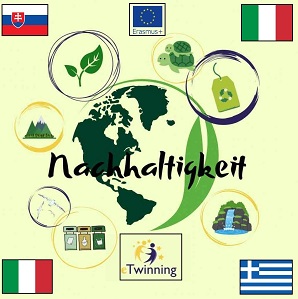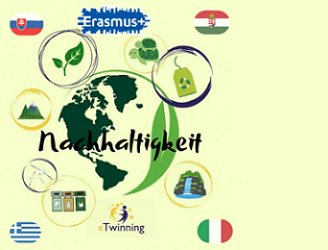
![]()
Sport is not just about exercise and fun – it also has a significant impact on our environment. At a time when climate change, resource scarcity, and pollution are posing ever greater challenges, sustainable action is becoming important in all areas of life – including sport.
This presentation focuses on the topic of “sustainable sport” and shows how sport can be made more environmentally friendly and future-oriented. It covers fair clothing, conscious energy consumption, sustainable travel to sports venues, and much more.
With interactive surveys, opinion polls, and concrete examples, it gives young people the opportunity to reflect on their own behavior and develop new ideas for a green future in sports. Because only together can we shape our future.
The students in the program continuously engage with various common topics. One of these, entitled “Sustainable Sport,” is currently being launched (February 2025).
This topic arose during the meeting in Slovakia, where the students explored it and created posters, podcasts, and TikTok videos.
However, work on this topic has continued and will be completed in fall 2025, when all the activities of the students from the four schools will be brought together. Here you can see the first part of the joint work.
The students also played games on the topic of
sustainable sports (Kahoot, Mentimeter, board games) in a video conference.
https://youtube.com/shorts/6R2FlkFIt2Q





Evaluation of the Mentimeter questionnaire – summary
The results of the Mentimeter questionnaire on the presentation “Sustainable sport – shaping the future together” accurately reflect the current awareness of students in the area of sustainability and provide insight into the extent to which they understand and perceive the topic in a sporting context. The majority of participants correctly recognized that, for example, artificial turf containing microplastics, air travel to tournaments, and the annual purchase of new soccer shoes are not compatible with sustainable sport. This shows that basic knowledge is already in place and that the topic is being critically examined.
thema_heute_nachhaltiger_sport_gemeinsam_die_zukunft_gestalten
The students also realistically assess the effects of climate change on sport. The answers make it clear that they are aware of problems such as training difficulties during heat waves, lack of snow, or the closure of ice rinks. When it comes to mobility to school or training, the picture is mixed: many use public transportation, but a significant proportion travel by car. Bicycles and e-scooters are not used at all – there is a clear need for action here to promote more environmentally friendly alternatives.
The students rated their everyday sporting activities as “mostly” or “somewhat” sustainable. This shows that a certain level of environmental awareness exists, but that it should be further promoted – among other things through practical examples. When asked what supports sustainable sport, most mentioned recycled sportswear, bicycles as a means of transport and avoiding waste. Aspects such as the repair of sports equipment or the use of regional products were less prominent, which offers new starting points for further awareness-raising.
It is particularly encouraging that 77% of respondents said they had gained new ideas from the presentation. This clearly shows that the event achieved its goal: it made the topic of sustainable sport tangible, inspired the students, and encouraged them to contribute to environmental protection through their own actions.
Overall, it can be said that young people are interested, open, and sensitive to sustainability issues. At the same time, there is still room for improvement—especially in the areas of mobility and conscious consumption. The presentation thus served as an effective starting point for a further process of awareness raising.






No Comments Yet